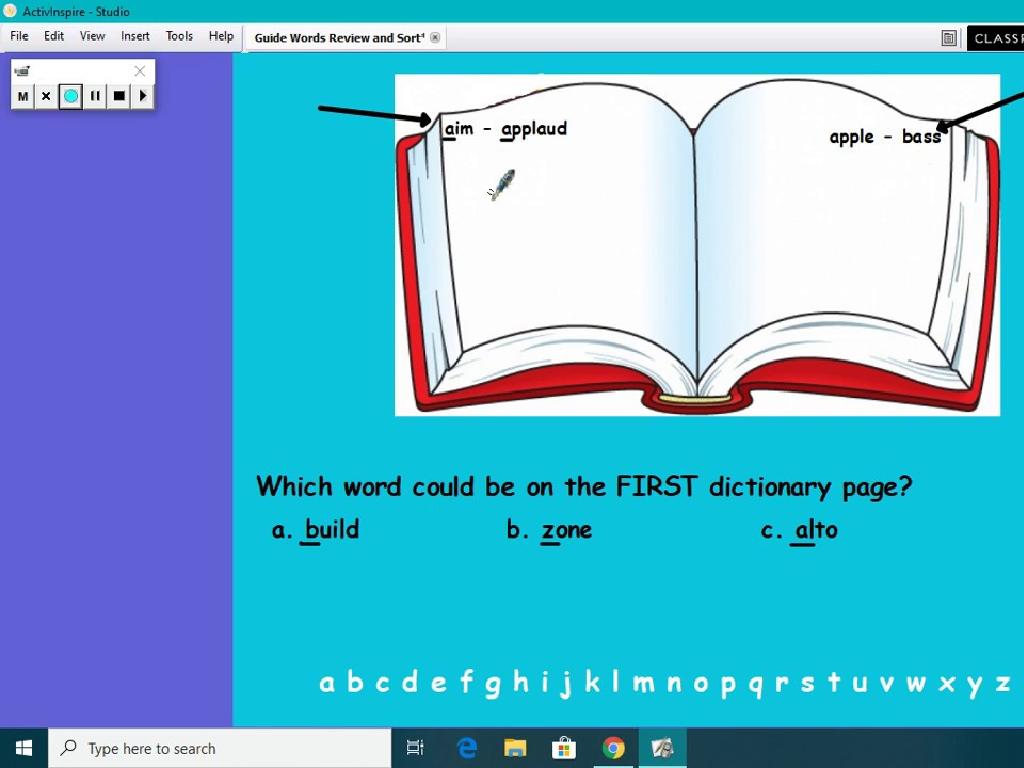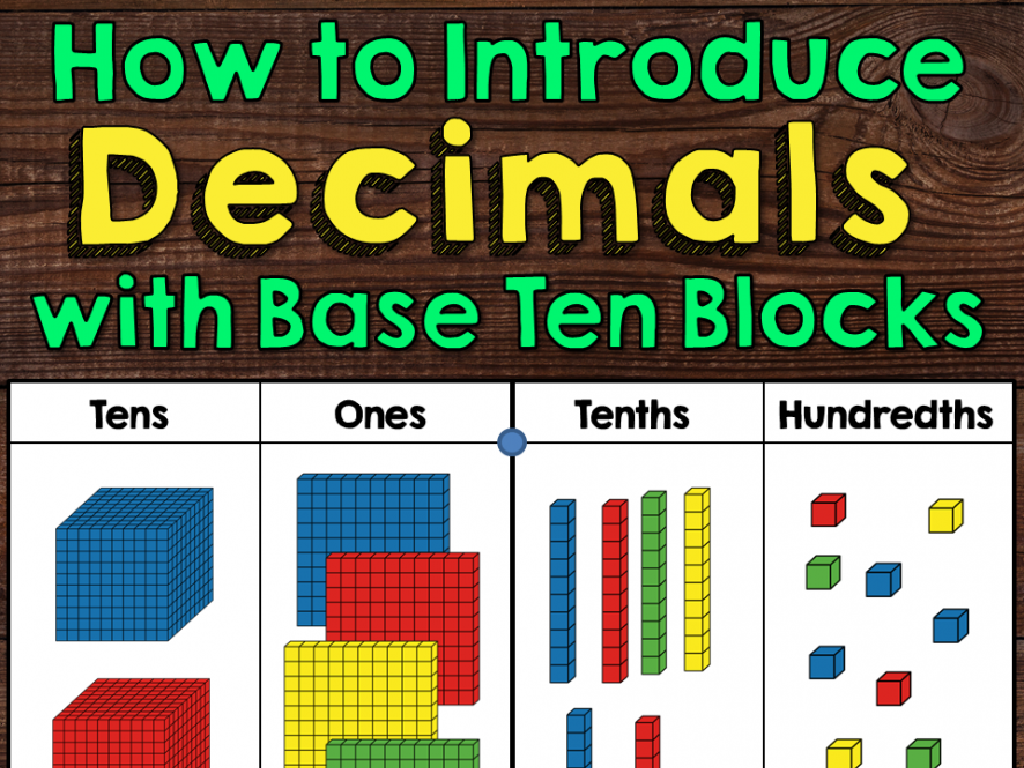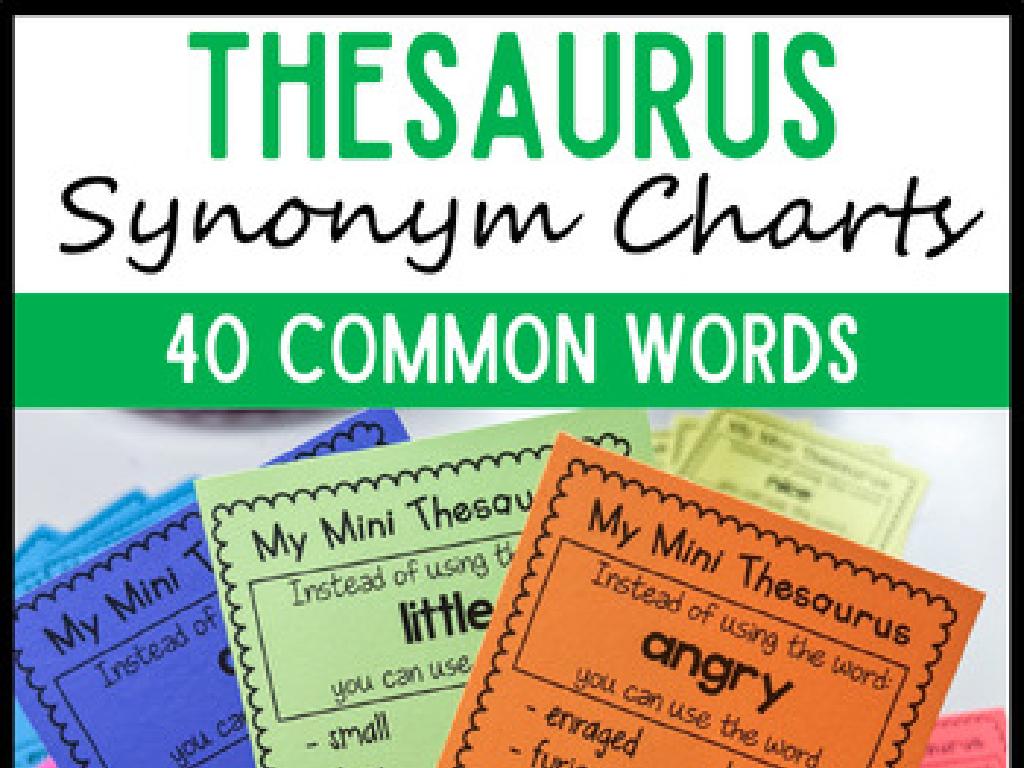Sort Shapes Into A Venn Diagram
Subject: Math
Grade: First grade
Topic: Venn Diagrams
Summary: Introduce first graders to Venn diagrams through fun, hands-on shape sorting activities. This lesson teaches children how to compare and categorize shapes by features like curves and corners, visually showing similarities and differences with overlapping circles. Students practice sorting circles, squares, triangles, and more, reinforcing observation and critical thinking skills. The presentation encourages teamwork and interactive group activities, making Venn diagrams an engaging tool for understanding math concepts.
Please LOG IN to download the presentation. Access is available to registered users only.
View More Content
Welcome to Venn Diagrams!
– Good morning, class!
– Today’s fun lesson: Venn diagrams
– Venn diagrams help us sort
– A Venn diagram has circles that overlap to show what’s in common
– Let’s talk about shapes you know
– Think about circles, squares, triangles, and more
|
This slide is designed to introduce first graders to the concept of Venn diagrams in a fun and engaging way. Start the class with a warm greeting and explain that Venn diagrams are a special tool we use to sort and categorize things based on their attributes. Encourage the children to think about and share different shapes they are familiar with, such as circles, squares, and triangles. This will set the foundation for understanding how Venn diagrams can visually represent similarities and differences between groups. The activity will involve sorting shapes into a Venn diagram based on their characteristics, which will help develop critical thinking and categorization skills.
Sorting Shapes with Venn Diagrams
– Venn Diagram Introduction
– A Venn diagram has circles to sort and compare things.
– Circles Show Groups
– Each circle can represent a different group of shapes.
– Sorting Shapes by Features
– Place shapes into the correct circle based on their features like number of sides.
– Overlapping Circles Share Traits
– Where circles overlap, place shapes that fit into both groups.
|
This slide introduces first graders to the concept of Venn diagrams as a tool for sorting and comparing objects, specifically shapes. Start by explaining that a Venn diagram is made up of circles that represent different groups. Show how shapes can be sorted into these circles based on their features, such as color, size, or number of sides. Emphasize the overlapping area of the circles as a special place where only shapes that have features of both groups belong. Use simple, relatable examples like sorting fruits by color or toys by type to make the concept more tangible. Encourage students to think of their own examples and understand that the Venn diagram is a visual aid to help them see similarities and differences between groups.
Sorting Shapes with Venn Diagrams
– Shapes have different features
– Like color, size, or type (circle, square)
– Using Venn diagrams to sort
– Two circles that show similarities and differences
– Thinking about sorting shapes
– Practice sorting together
– We’ll sort shapes by color and type in class
|
This slide introduces the concept of sorting shapes using Venn diagrams to first graders. Begin by discussing the various features of shapes, such as color, size, and type. Explain that a Venn diagram is a tool that helps us see what different shapes have in common and how they are different. Use simple, clear language and visual aids to show examples of shapes that can be sorted into different categories. During the class activity, provide a variety of shapes for the students to sort using Venn diagrams. Encourage them to think about the characteristics of each shape and where it belongs on the diagram. This hands-on activity will help reinforce their understanding of both shapes and Venn diagrams.
Sorting Shapes: Curves and Corners
– Shapes can have curves
– Like circles, no sharp points
– Shapes can have corners
– Like squares and triangles, with sharp points
– Sorting shapes with Venn diagram
– Place shapes in the correct section based on their features
– Practice with different shapes
|
This slide introduces the concept of sorting shapes based on their physical features, specifically curves and corners. Begin by explaining that shapes like circles are smooth and have curves but no corners. In contrast, shapes such as squares and triangles have corners where two sides meet at a point. Introduce the Venn diagram as a tool for sorting shapes into two groups: those with curves and those with corners. During class, provide various shapes for students to practice sorting. Encourage them to explain their reasoning for placing a shape in a particular section of the Venn diagram. This activity will help develop their observational skills and understanding of geometric properties.
Sorting Shapes with Venn Diagrams
– Understand Venn diagrams
– Circle for curved shapes
– Shapes like circles and ovals go here
– Circle for cornered shapes
– Squares and triangles go here
– Overlap for both features
– Example: a heart has curves and corners
|
Introduce the concept of Venn diagrams to the students as a tool for sorting and categorizing objects based on their features. Explain that one circle will include shapes that have curves, such as circles and ovals. The other circle will include shapes with corners, like squares and triangles. The area where the two circles overlap is for shapes that have both curves and corners, such as a heart. Use tangible shape cutouts for an interactive class activity, allowing students to physically place the shapes in the correct sections of the Venn diagram. This will help them visually understand the concept of sorting based on characteristics and the idea of commonality where the circles intersect.
Let’s Sort Shapes with Venn Diagrams!
– Observe the shape I show you
– Does it have curves, corners, or both?
– Curves like a circle, corners like a square
– Place the shape in the Venn diagram
– Find the right section for each shape
– We’ll sort shapes together as a class
|
This slide is designed to be interactive, engaging students in a class activity where they learn to categorize shapes using a Venn diagram. Start by showing a shape and asking the class to observe its properties. Discuss the concepts of curves and corners, and guide them to decide where the shape belongs on the Venn diagram. For example, a circle would go in the ‘curves’ section, while a square would fit in the ‘corners’ section. If a shape has both, such as a heart, it would fit in the overlapping area. This activity will help students understand how to classify shapes and reinforce their knowledge of geometry and sorting.
Class Activity: Sorting Shapes with Venn Diagrams
– Team up with classmates
– Sort shapes into groups
– Find similarities and differences
– Use Venn diagrams correctly
– Overlapping areas show shared features
– Show where each shape fits
|
In this interactive class activity, students will work in small groups to sort various shapes into a Venn diagram. Provide a set of shapes to each group and instruct them on how to use the Venn diagram to categorize the shapes based on their attributes. For example, one circle could represent ‘shapes with straight lines,’ and another ‘shapes with curved lines.’ The overlapping area would then include shapes that have both features. This activity will help students understand the concept of sorting and classifying based on shared characteristics. Possible variations of the activity could include sorting by color, size, or number of sides. Ensure that each group has a chance to explain their sorting rationale to the class to reinforce their understanding.
Review: Sorting Shapes with Venn Diagrams
– Celebrating our Venn diagram skills
– Venn diagrams show similarities & differences
– Like a game, they help us sort shapes by properties
– Reflect on today’s learning
– Think about what you found easy or hard
– Share your discoveries
– Tell the class about the shapes you sorted
|
This slide is meant to recap what the students have learned about using Venn diagrams to sort shapes. Start by praising their effort and success in the activity. Explain that Venn diagrams are tools that help us visually organize information by showing what items have in common and what makes them unique. Encourage the students to reflect on what they’ve learned and invite them to share their experiences. Ask them about the shapes they sorted and what characteristics they used to decide where to place them in the Venn diagram. This discussion reinforces their understanding and allows them to articulate their thought process, which is crucial for their learning development.
Great Work on Venn Diagrams!
– Proud of your Venn diagram skills
– Venn diagrams sort many things
– Not just shapes, but colors, sizes, and more!
– Keep practicing sorting
– Try sorting toys, fruits, or books at home
– Excited for our next math adventure
|
This slide is meant to conclude the lesson on Venn diagrams, providing positive reinforcement for the students’ efforts and understanding. Emphasize the versatility of Venn diagrams in sorting and categorizing various items, which can be a fun activity to continue at home. Encourage the students to practice with different objects to reinforce the concept. End the lesson on an enthusiastic note, looking forward to more mathematical explorations, and ensure the students leave feeling accomplished and excited about what they’ve learned.





